
How to Use Pixhawk 6x: Examples, Pinouts, and Specs
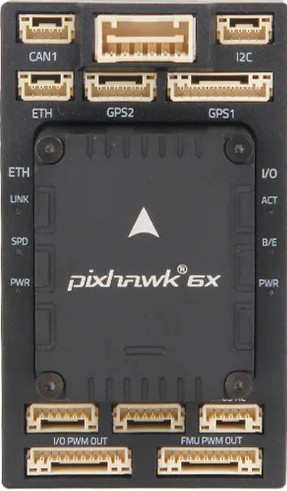
 Design with Pixhawk 6x in Cirkit Designer
Design with Pixhawk 6x in Cirkit DesignerIntroduction
The Pixhawk 6x is an advanced flight control hardware developed by HolyBro. It is designed for drones and other unmanned vehicles, offering high processing power, multiple sensor inputs, and compatibility with various autopilot software platforms such as PX4 and ArduPilot. The Pixhawk 6x enables precise navigation, control, and automation for a wide range of aerial, ground, and marine applications.
Explore Projects Built with Pixhawk 6x
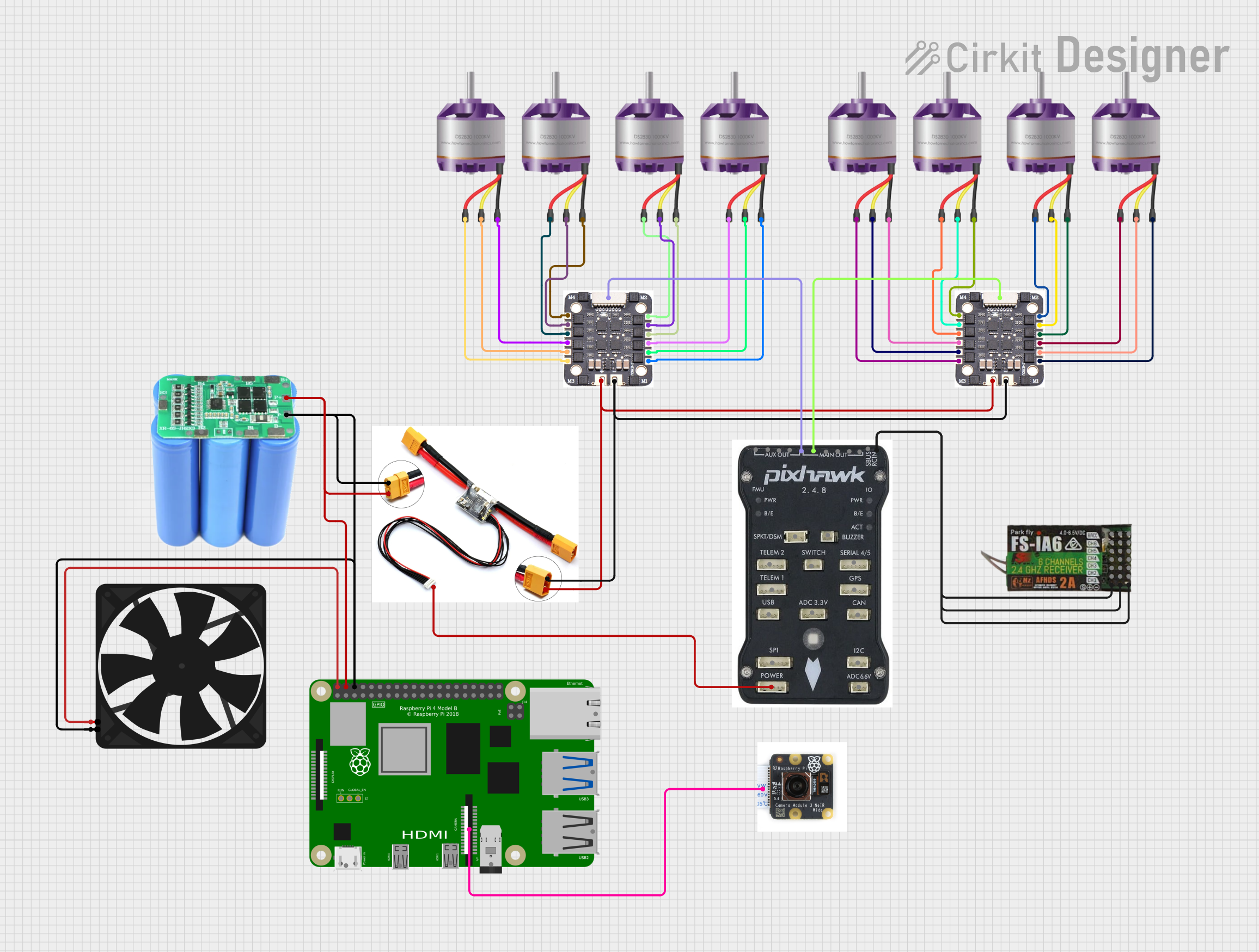
 Open Project in Cirkit Designer
Open Project in Cirkit Designer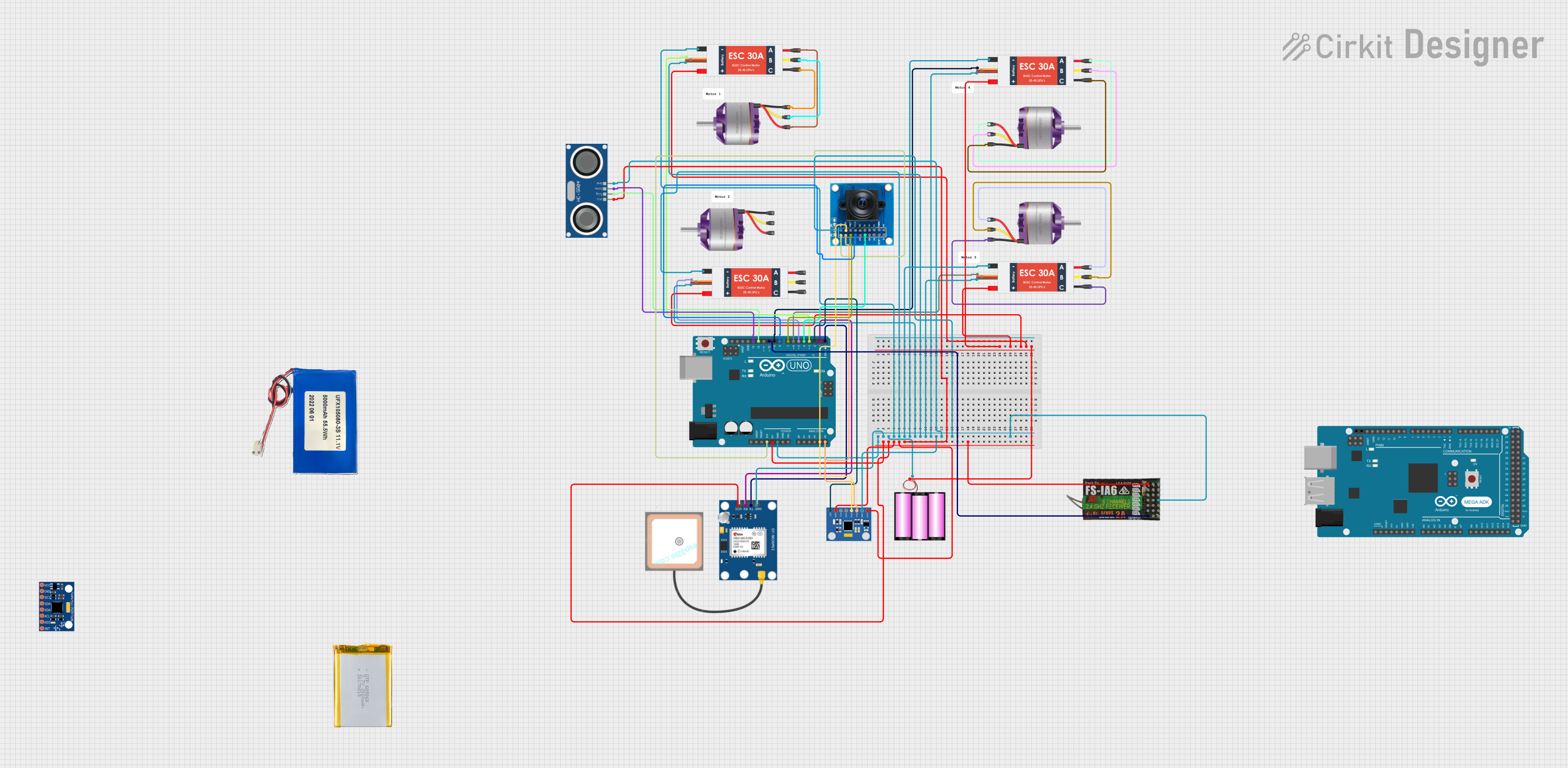
 Open Project in Cirkit Designer
Open Project in Cirkit Designer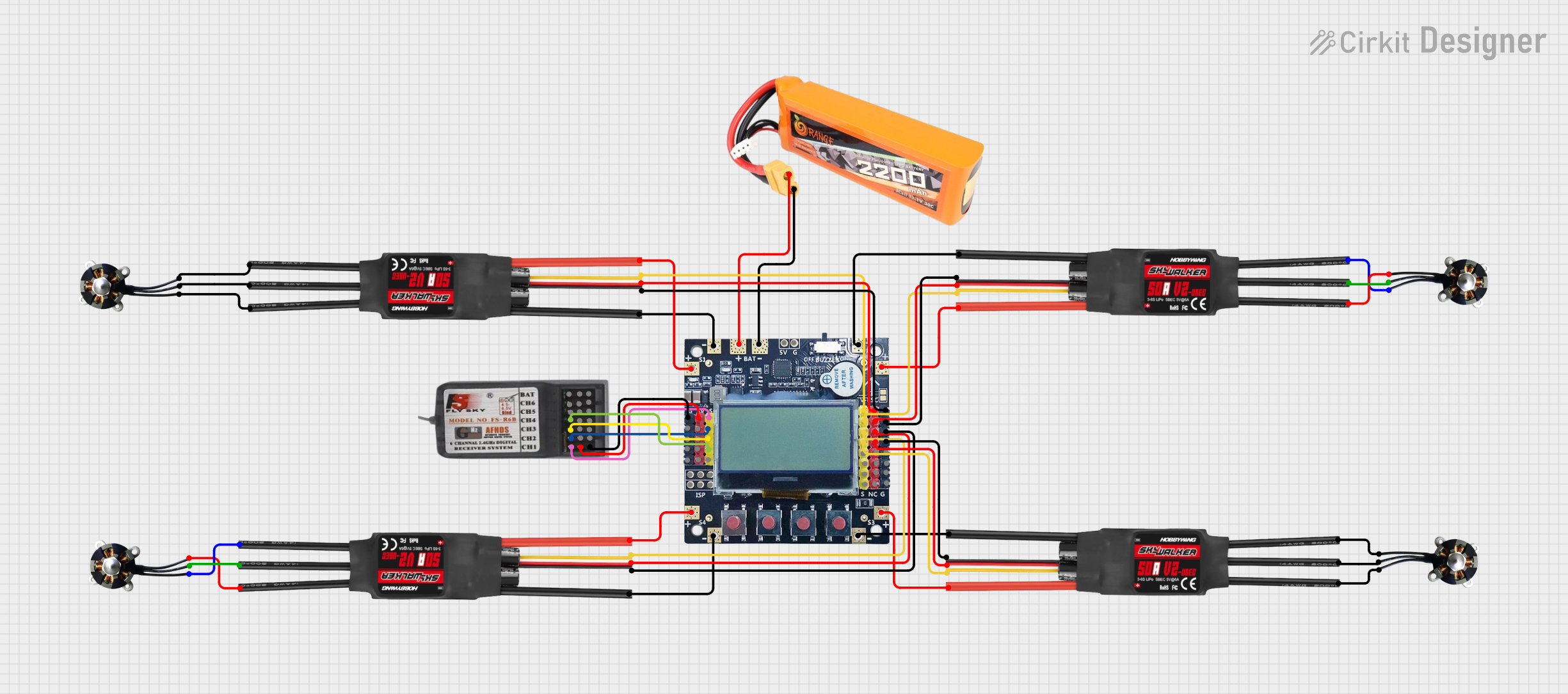
 Open Project in Cirkit Designer
Open Project in Cirkit Designer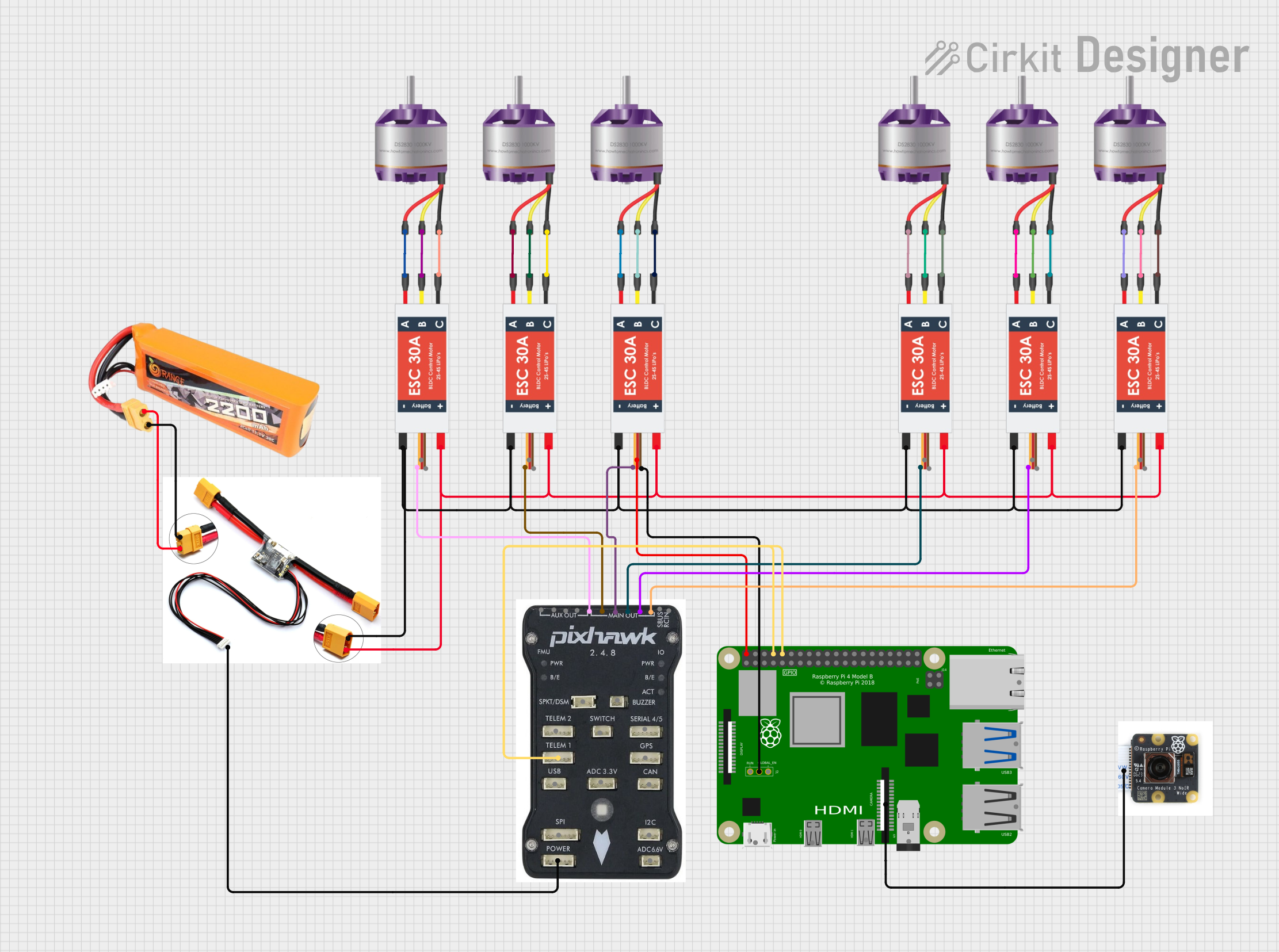
 Open Project in Cirkit Designer
Open Project in Cirkit DesignerExplore Projects Built with Pixhawk 6x

 Open Project in Cirkit Designer
Open Project in Cirkit Designer
 Open Project in Cirkit Designer
Open Project in Cirkit Designer
 Open Project in Cirkit Designer
Open Project in Cirkit Designer
 Open Project in Cirkit Designer
Open Project in Cirkit DesignerCommon Applications and Use Cases
- Multirotor drones for aerial photography, mapping, and surveying
- Fixed-wing UAVs for long-range missions
- Autonomous ground vehicles (AGVs) for industrial or research purposes
- Marine vehicles such as autonomous boats or submarines
- Robotics projects requiring advanced navigation and control
Technical Specifications
The Pixhawk 6x is a compact yet powerful flight controller with the following key specifications:
General Specifications
- Processor: STM32H743, 32-bit ARM Cortex-M7, 480 MHz
- IMUs: Dual IMUs (ICM-42688-P and BMI055) for redundancy
- Barometer: MS5611
- Power Supply: 4.3V to 5.4V input voltage range
- Dimensions: 38.5 mm x 55.5 mm x 15.5 mm
- Weight: 15.8 g
Connectivity
- UART Ports: 6
- I2C Ports: 2
- CAN Ports: 2 (with CAN FD support)
- SPI Ports: 1
- PWM Outputs: 8
- USB: Micro-USB for configuration and firmware updates
- SD Card Slot: Supports microSD cards for data logging
Pin Configuration and Descriptions
The Pixhawk 6x features multiple connectors for peripherals and sensors. Below is a summary of the key pin configurations:
Power Input
| Pin Name | Description | Voltage Range |
|---|---|---|
| VDD_5V | Main power input | 4.3V - 5.4V |
| VDD_3.3V | Internal 3.3V power output | 3.3V |
PWM Outputs
| Pin Name | Description | Signal Type |
|---|---|---|
| PWM1 | Motor/servo control output | PWM |
| PWM2 | Motor/servo control output | PWM |
| PWM3 | Motor/servo control output | PWM |
| PWM4 | Motor/servo control output | PWM |
| PWM5 | Motor/servo control output | PWM |
| PWM6 | Motor/servo control output | PWM |
| PWM7 | Motor/servo control output | PWM |
| PWM8 | Motor/servo control output | PWM |
Communication Ports
| Port Name | Description | Protocol |
|---|---|---|
| UART1 | Serial communication port 1 | UART |
| UART2 | Serial communication port 2 | UART |
| I2C1 | Sensor communication port 1 | I2C |
| I2C2 | Sensor communication port 2 | I2C |
| CAN1 | CAN bus port 1 (with CAN FD) | CAN |
| CAN2 | CAN bus port 2 (with CAN FD) | CAN |
| SPI | High-speed sensor interface | SPI |
Usage Instructions
The Pixhawk 6x is a versatile flight controller that can be used in a variety of unmanned vehicle applications. Below are the steps and best practices for using the Pixhawk 6x in a typical setup:
Step 1: Powering the Pixhawk 6x
- Connect a compatible power module to the VDD_5V input. Ensure the input voltage is within the range of 4.3V to 5.4V.
- Use a backup power source (e.g., a LiPo battery) for redundancy if required.
Step 2: Connecting Peripherals
- Attach motors or servos to the PWM outputs. Ensure the correct mapping of motors for your vehicle type (e.g., quadcopter, hexacopter).
- Connect sensors (e.g., GPS, magnetometer, or rangefinder) to the appropriate I2C, UART, or SPI ports.
- Use the CAN ports for advanced peripherals such as UAVCAN-enabled devices.
Step 3: Configuring the Firmware
- Download and install the PX4 or ArduPilot firmware using the QGroundControl or Mission Planner software.
- Connect the Pixhawk 6x to your computer via the Micro-USB port.
- Follow the on-screen instructions in the software to flash the firmware and calibrate the sensors.
Step 4: Testing and Deployment
- Perform a pre-flight check to ensure all sensors and actuators are functioning correctly.
- Test the vehicle in a controlled environment before deploying it in real-world scenarios.
Arduino UNO Integration Example
While the Pixhawk 6x is not typically used with an Arduino UNO, it can communicate with it via UART for custom applications. Below is an example of Arduino code to send data to the Pixhawk 6x:
#include <SoftwareSerial.h>
// Define RX and TX pins for communication with Pixhawk
SoftwareSerial pixhawkSerial(10, 11); // RX = pin 10, TX = pin 11
void setup() {
// Initialize serial communication
Serial.begin(9600); // For debugging
pixhawkSerial.begin(57600); // Pixhawk communication baud rate
Serial.println("Arduino-Pixhawk communication initialized.");
}
void loop() {
// Send a test message to Pixhawk
pixhawkSerial.println("Hello Pixhawk!");
// Check for incoming data from Pixhawk
if (pixhawkSerial.available()) {
String incomingData = pixhawkSerial.readString();
Serial.print("Received from Pixhawk: ");
Serial.println(incomingData);
}
delay(1000); // Wait 1 second before sending the next message
}
Best Practices
- Always use shielded cables for critical connections to minimize electromagnetic interference (EMI).
- Regularly update the firmware to benefit from the latest features and bug fixes.
- Use vibration dampening mounts to reduce noise affecting the IMUs.
Troubleshooting and FAQs
Common Issues and Solutions
Issue: Pixhawk 6x does not power on.
- Solution: Verify the power supply voltage is within the specified range (4.3V to 5.4V). Check all power connections.
Issue: Motors or servos are not responding.
- Solution: Ensure the PWM outputs are correctly connected and configured in the firmware. Verify motor/servo calibration.
Issue: GPS signal is weak or unavailable.
- Solution: Place the GPS module in an open area away from obstructions. Check the GPS connection to the I2C or UART port.
Issue: Communication with the computer fails.
- Solution: Ensure the correct USB drivers are installed. Try a different USB cable or port.
FAQs
Q: Can the Pixhawk 6x be used with custom autopilot software?
- A: Yes, the Pixhawk 6x supports custom firmware development using PX4 or ArduPilot.
Q: What is the maximum number of motors the Pixhawk 6x can control?
- A: The Pixhawk 6x can control up to 8 motors using its PWM outputs.
Q: Does the Pixhawk 6x support telemetry?
- A: Yes, telemetry modules can be connected via UART or CAN ports for real-time data transmission.
Q: Is the Pixhawk 6x compatible with UAVCAN peripherals?
- A: Yes, the Pixhawk 6x supports UAVCAN peripherals via its CAN ports.
This concludes the documentation for the Pixhawk 6x. For further assistance, refer to the official HolyBro user manual or community forums.